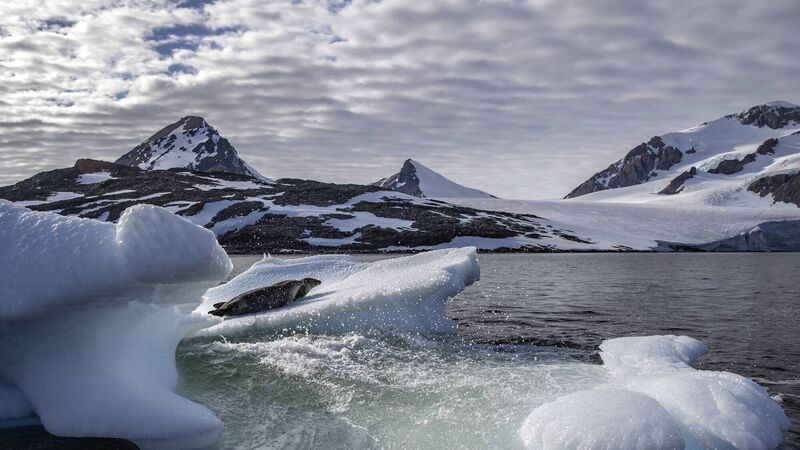Antarctica's sea ice at second-lowest level in 44 years

The Antarctic saw worrying spikes in March temperatures, including an intense warm spell. Photo: Sebnem Coskun/Anadolu Agency via Getty Images
Antarctica saw its second-lowest sea ice cover in 44 years last month as global warming continues to have a devastating impact on the world.
March was the fifth warmest on record across the globe, according to the European Commission-backed Copernicus Climate Change Service.
In a week that the UN-backed Intergovernmental Panel of Climate Change (IPCC) warned of a "now or never" path to finally tackle global warming to avoid the worst of human-induced extreme weather, data from the climate change service found that the global average temperature for March was about 0.4ºC higher than the 1991-2020 average.
The Copernicus service analysed data from across the continent "using billions of measurements from satellites, ships, aircraft and weather stations around the world".
It found that last month was the fifth-highest recorded temperature for March, with daily temperatures in Antarctica breaking records.
March #Temperature highlights from #CopernicusClimate Change Service
— Copernicus ECMWF (@CopernicusECMWF) April 6, 2022
Last month was:
🌡globally 0.39°C warmer than the 1991-2020 average
🌡the fifth warmest March on record
🌡Europe: about 0.4ºC cooler than average, the third coldest in last 10 years
👉 https://t.co/HwimyVxoZN
"Antarctic sea ice extent for March was 26% below the 1991-2020 average, ranking second-lowest in the 44-year satellite record, with large areas of below-average sea ice concentration in the Ross, Amundsen, and northern Weddell Seas," it said. Sea ice extent is the total area covered by some amount of ice.
Arctic sea ice extent was 3% below the 1991-2020 average, C3S said, continuing the pattern of below average, but not extremely low extents observed since July 2021.
Europe as a whole was around 0.4ºC cooler than average in March 2022 or the third coldest in the last 10 years, but still around 2.4°C warmer than the -2.71°C anomaly in March 2013.
However, Europe's overall temperature was blurred by temperature anomalies seeing northern Europe warmer than usual, and the reverse in the southern part of the continent, C3S said.
"There was a contrast in temperature anomalies across Europe, with warmer-than-average conditions in the north and colder-than-average conditions in the south; these cold conditions extended into north Africa and across into Russia," the body said.
Northern Norway, for example, saw higher temperatures than usual, while Greece and Turkey were colder, extending into North Africa and the Middle East.
Rainfall in Europe throughout March was lower than usual. "Most of Europe was drier than average. The Iberian Peninsula was an exception, where wetter-than-average conditions were in striking contrast to the dryness observed in February," C3S said.
India, which has come in for criticism for its emissions output due to its economic output, saw the warmest March in 122 years of record keeping.
The Antarctic saw worrying spikes in March temperatures, with one recording above anything seen in decades, according to the data.
"The Antarctic also saw an intense warm spell, with air temperatures well above average, and in Vostok, for example, the temperature reached -17.7° C which is the warmest March temperature measured there in its 65-year recorded history," C3S said.
CLIMATE & SUSTAINABILITY HUB













